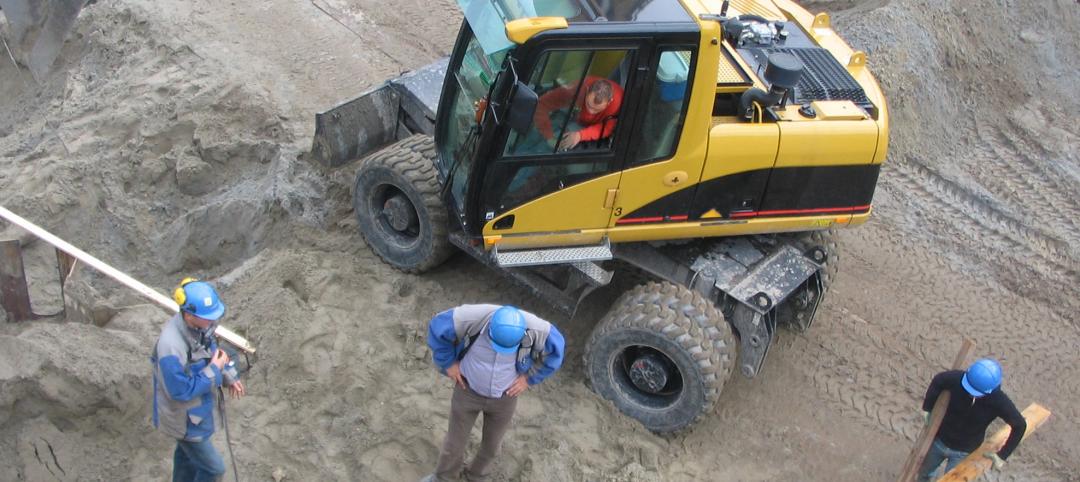Construction employment climbed by 110,000 in March as the industry recovered from severe winter weather that pushed employment down by 56,000 in February, according to an analysis by the Associated General Contractors of America of government data released today. Association officials said they were encouraged by the recent job gains and the potential for new infrastructure investments. But they cautioned that rising prices and erratic delivery schedules for key construction materials—as documented in their recent Construction Inflation Alert–and continued project cancellations could undermine the sector’s recovery.
“The rebound in March is certainly good news, but contractors face growing challenges that imperil further growth in nonresidential employment,” said Ken Simonson, the association’s chief economist. “In fact, industry job gains in the first quarter of 2021 as a whole have slowed sharply from the second half of 2020.”
Construction employment in March totaled 7,466,000, which was 182,000 employees or 2.4% below the most recent peak in February 2020. Over the past three months, the industry added 66,000 jobs, an average of 22,000 per month. In contrast, construction employment increased more than three times as fast from June to December last year, with an average gain of 76,000 jobs per month, the economist noted.
Nonresidential construction is experiencing headwinds from postponed and canceled projects, steep increases in materials costs, and lengthening delivery times. Simonson pointed out that the nonresidential sector—comprising nonresidential building, specialty trades, and heavy and civil engineering contractors—remains 231,000 jobs or 4.9% shy of the pre-pandemic peak set in February 2020, whereas employment among residential building and specialty trade contractors is 49,000 or 1.6% above the February level.
Unemployment in construction remains elevated. A total of 835,000 former construction workers were unemployed in March, up from 658,000 a year earlier and the highest for March since 2014. The industry’s unemployment rate in March was 8.6%, compared to 6.9% in March 2020.
Association officials said the best way to ensure continued construction job gains was for Congress to act on the President’s infrastructure funding recommendations without the tax and regulatory additions that would imperil broader economic growth. They also continued to call for the removal of tariffs on key construction materials and federal measures to address port and shipping backups.
“It will take more than nice weather for the construction industry to keep adding jobs this year,” said Stephen E. Sandherr, the association’s chief executive officer. “Investing in infrastructure, avoiding needless new regulations and counterproductive tax hikes, and fixing the supply chain will help the industry create many more high-paying construction career opportunities over the coming months.”
View the Construction Inflation Alert.
Related Stories
| Nov 3, 2011
OSHA Publishes Information on Rights and Safety
OSHA recently published new and revised information that explains workers’ and employers’ rights, as well as how to protect workers from hazards in the construction industry.
| Nov 3, 2011
Sierra Club Critical of Albuquerque Mayor’s Push to Weaken Green Code
The mayor’s plan to move to a less environmentally friendly code would mean confusion for people in the construction industry and a loss of energy efficiency and money for consumers, said Shrayas Jatkar of the Sierra Club.
| Nov 3, 2011
Lax Code Enforcement Blamed for Deaths in Turkey’s Earthquake
Despite tough safety codes approved a decade ago after earthquakes killed 18,000 people, lax enforcement led to hundreds of deaths after a recent earthquake in Turkey.
| Nov 3, 2011
International Green Construction Code Will Provide Template for Local Codes
A uniform code for green construction is being readied for publication in March.
| Oct 31, 2011
NIST issues new code requirements
Buildings taller than 420 feet are now required to include an extra exit stairwell or a specially designed elevator that occupants can use for evacuations.
| Oct 28, 2011
Los Angeles County mulling building codes for improving health
An ordinance would amend county building codes to promote better walking environments, encourage more bicycling, improve access to healthy foods (farmers markets, community gardens), and enhance project review requirements to ensure that developers include healthy-lifestyle components in their building plans.
| Oct 28, 2011
Bipartisan opposition to federal 3% withholding for contractors
Both major political parties and the Obama Administration support repealing a law that would withhold 3% of all government contracts.
| Oct 28, 2011
OSHA requires training module on top causes of construction deaths
The Occupational Health and Safety Administration (OSHA) now requires a training module on the top four causes of death for construction workers.
| Oct 28, 2011
New York City requiring building energy use to be posted online
Owners of every New York City commercial and residential building larger than 50,000 sf will have to post each building’s energy use online by 2013.
| Oct 28, 2011
New ISO standard for escalator safety
A new ISO standard specifies safety requirements for escalators and moving walks.











